Own what you do
Tom Jones and his Hy-Plains team keep feeding, learning and showing the way to betterStory and photos by
Miranda Reiman
September 25, 2019
If they set the bar there today, by tomorrow, they’ll raise it higher.
That’s the kind of feedyard Tom Jones manages. It’s the kind of person Jones is.
In 1999, he and investors bought a 28,000-head yard near Montezuma, Kan., and immediately began doing business as Hy-Plains Feedyard LLC. Two decades later he still makes his living on the business, but that looks different today than it did then. It may look different next year, or even next month.
“We have cattle grading 100% Choice and now we are working on the Prime, so what is the next demand driver going to be?” Jones asks. “We have to look to our new customers and they are looking for transparency, wholesome food. They are looking for traceability, so those are some of the things I’m looking for in the future.”
That attitude, and the actions behind it, earned Hy-Plains Feedyard the 2019 Certified Angus Beef ® (CAB®) Progressive Partner Award.
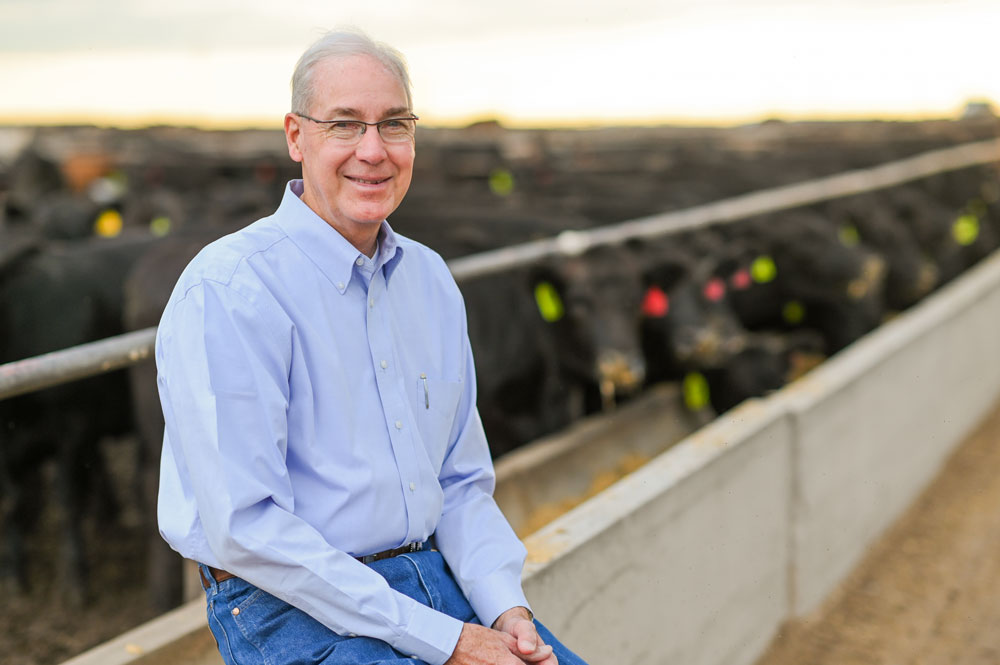
For the good of the industry
Coming off a good year in 2014, the business was in a strong financial position. Having expanded twice before—first to 35,000, then to the current 50,000 head—Jones wasn’t interested in building more pens. New feedtrucks? Too frivolous when the others were in good working condition. Instead of traditional capital outlays, he decided to make a long-term, far-reaching investment.
It took some time to get it just right but in 2017, the company opened its Hy-Plains Education and Research Center.
“We felt it was time. The industry has changed over the last seven years, the genetics have changed. Our ability to study cattle, collect data and see how that affects performance has changed,” Jones says.
The center sits just beyond pens equipped with the GrowSafe system that monitors feed efficiency. The Silencer chute and working facility is the heart of the Center’s building, with viewing deck above and enough meeting space for 200.
It’s part research, part demonstration facility, part communal office space, but all grounded in sharing knowledge and growing more of it.
“If we can study our lessons, we can make a huge difference,” he says. Jones enjoys feeding cattle for commercial and registered Angus customers because they’re the ones who “influence change in the industry.”
On any given day, staff from ABS might use one office, while next door, veterinary professionals analyze data they’re gathering at the yard. Those would be staff from the Hays, Kan.,-based Veterinary Research and Consulting Services (VRCS).
“The facility, with the managers and Tom’s visionary thinking and ability to think outside the box, it allows us the avenue to try different things, different products and different management strategies to give us valid results that will help us make improvements all along the production chain,” says Miles Theurer, research director for VRCS and Hy-Plains Feedyard.
Anti-microbial usage, vaccination strategies, health detection technology—the list of things Jones wants to study is long, but pointed.
“The kind of cattle we have is a real mixed bag of literally some of the best genetics in the world, along with some of the worst genetics out here,” Jones says, noting they’re 95% customer owned. “We enjoy feeding the better cattle because they are so easy to market. They are fun to feed.”
But the higher-risk kind allow them to compare and do research across many types of cattle.
Cattle feeder turned tour guide
They’re able to find new answers, while externally sharing answers the industry already knows.
“There is a good story to tell, but we are all busy with the way the markets are and the environment and the weather, the whole list of things we worry about. We do have a great story to tell, it’s just hard to find the time to do it,” Jones says.
At Hy-Plains, they make time.
“My biggest desire was to be able to bring in a busload of fourth graders and have them watch us process cattle,” Jones says. So that’s exactly what he told the architect in 2015.
The second-story observation area lets guests easily rotate through to get a bird’s-eye view, while hearing what goes on below through the sound system. On the ground floor, the alley snakes around an elevated concrete center, where visitors can safely get an up-close look at the animals.
“We get comments all the time that, ‘We thought it would be noisy and dusty and dirty,’” he says. “It doesn’t have to be noisy and dusty and dirty.”
Jones hosts the leadership from McDonald’s and Carl’s Jr. in the same place where 120 elementary students from neighboring schools come out for a field day. One day he’s tackling global environmental challenges as a member of the U.S. Roundtable on Sustainable Beef and the next he’s training college-age interns.
A thank you note on his desk—“the most important piece of mail I’ve gotten this week”—shows his focus on the next generation.
“He’s been a tremendous mentor to me, to develop and expose me to different parts of the beef industry,” Theurer says, noting open discussions help frame the research role. “Tom is very direct. You always know where he’s coming from.”
Jones gives second chances, but corrects mistakes when he sees them. Everybody is held to the same standard, and everyone who works with him gets the same version of Tom Jones. He’s focused, competitive and serious about providing the best care he can for the cattle in his yard.
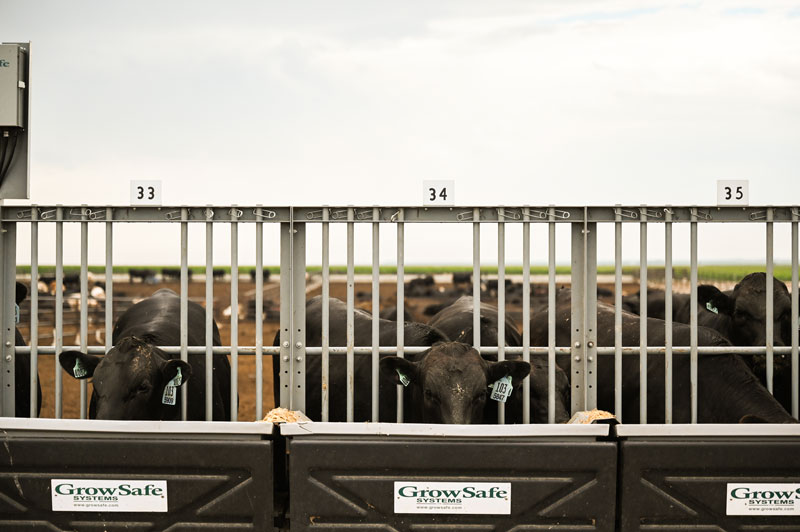
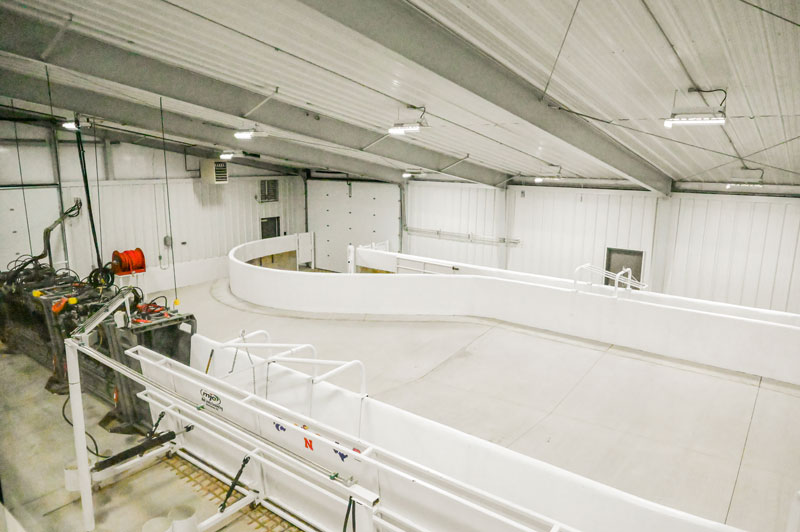
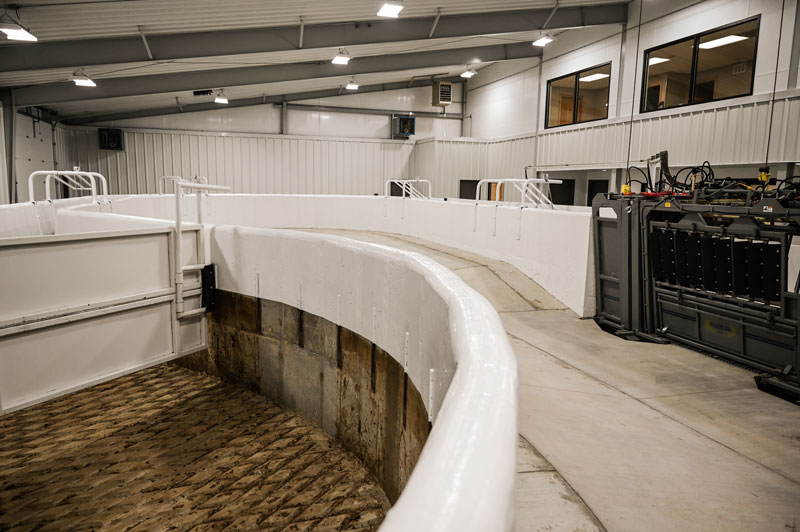
No rodeos allowed
Don’t ask how many cattle they can work in an hour.
“Processing cattle is not a timed event,” Jones says definitively.
It’s early morning load-out time, with three groups destined for one of four major packing plants close by. “This is the best, when cattle are moving but it sounds like nothing is going on.”
He has a 50-mile commute from Garden City each day, but always drives the yard on arrival, as he heads in.
“I just want to make sure we are taking care of the cattle needs right. The cattle will always tell you what they need,” he says. “The problem is that the business is so fast, we don’t always have time to stop and see what they are asking for.”
Training his crew and hiring expert consultants are among his highest goals.
“When we spend time teaching stockmanship skills to our employees, the cattle are not stressed. They are more comfortable so they perform better,” he says. “We don’t allow dogs. We work as quietly as possible.”
It takes extra work and hours to collect data and to do it right.
“These people we have on staff are very interested in making a difference,” Jones says.
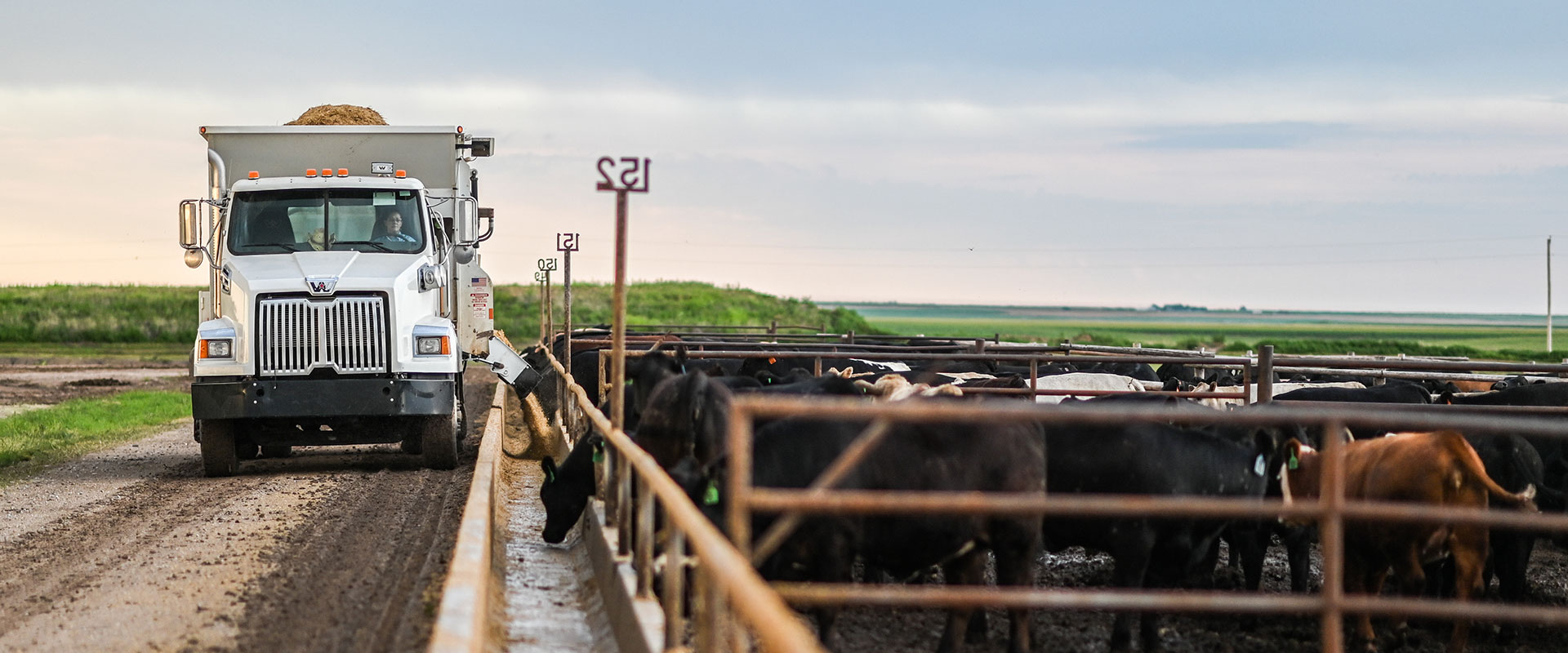
Better every day
His push to get better and his desire to win, are as much a part of how he was raised and how he mentors along the way, as they are a personal philosophy. They are values Jones and his wife, Dee, hope they’ve passed on to their two grown children.
From his own dad, the farm boy learned hard work and getting by with less. As a cattle buyer for IBP (now Tyson) and then Hy-Plains Dressed Beef, Jones learned about business. Working for feeding pioneer Earl Brookover, first as a pen rider when he was young and later managing Brookover Ranch Feedyard, Jones saw the importance of setting an example worth following.
“I was totally happy where I was at, and I started making excuses on why it would be hard [to buy Hy-Plains], but we decided to make the change anyway,” Jones says.
Fear of doing something different wasn’t enough to stifle the excitement in the risk.
“I had a business person tell me once, so what if you lose money? You’ll make more next month,” Jones says.
“You have to own something in your life.” That’s a fire that’s always burned in him. “It doesn’t matter if you own the job where you are working or you buy land or own your business. Own what you do.”
When cattle leave Hy-Plains Feedyard, Tom Jones knows his name is on every single one. It weighs on him to reach a little higher each day.
Originally published in the Angus Journal
A side note
Decades of dedication
Tom Jones, Hy-Plains Feedyard, asked all his managers to come up with one idea that would help them take better care of the cattle.
Cesar Martinez didn’t have to think long that day. He already had one in mind.
“If I knew exactly how much feed I was putting in every pen, then I’d know exactly what each one was getting,” offered the feed mill manager and head bunk reader.
They did know down to 100-pound (lb.) increments. Today, each pound that goes into the bunk is tracked in a master spreadsheet.
“It’s my bible,” Martinez says now.
It’s important to him, because it’s important to the cattle.
“Of course, I can’t do it all by myself,” Martinez says, praising the crew that helps deliver a consistent ration to the same pen within 15 or 20 minutes of the same time every day.
“If I’m gone three or four days, the first person I come and find is Cesar,” Jones says. It’s a trust that runs clear back to 1977, when the pair worked together for Earl Brookover. They were just getting started—Jones back from junior college and Martinez with three young children to feed—riding pens together.
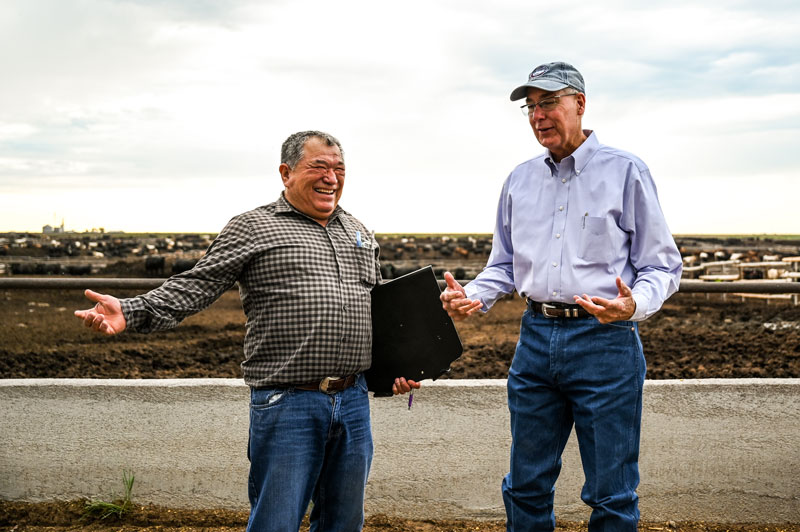
Decades later, they see their daily goals much the same.
“Be good at what you’re doing all the time,” Martinez says.
“We are a team,” Jones says. They make protocols and stick to a plan. They follow posted “T.L.C.” signs that hang around the feedyard. “We’re in competition every day with somebody else in this industry and these guys like to win. We know we win when our customers send more cattle the next go around.”
You Also Might Like…
$100,000 Up for Grabs with 2024 Colvin Scholarships
Certified Angus Beef is offering $100,000 in scholarships for agricultural college students through the 2024 Colvin Scholarship Fund. Aspiring students passionate about agriculture and innovation, who live in the U.S. or Canada, are encouraged to apply before the April 30 deadline. With the Colvin Scholarship Fund honoring Louis M. “Mick” Colvin’s legacy, Certified Angus Beef continues its commitment to cultivating future leaders in the beef industry.
Carcass Quality Set to Climb Seasonally
With the arrival of the new year the beef market will rapidly adjust to changes in consumer buying habits. This will remove demand pressure from ribs and tenderloins, realigning the contribution of these most valuable beef cuts to a smaller percentage of carcass value
Raised with Respect™ Cattle Care Campaign Launched This Fall
Raised with Respect™ was developed as part of a strategic cattle care partnership between Sysco and CAB. The collaboration focuses on supporting farmers and ranchers, equipping them with continuing education to stay current on best management practices and helping to increase consumer confidence in beef production.



